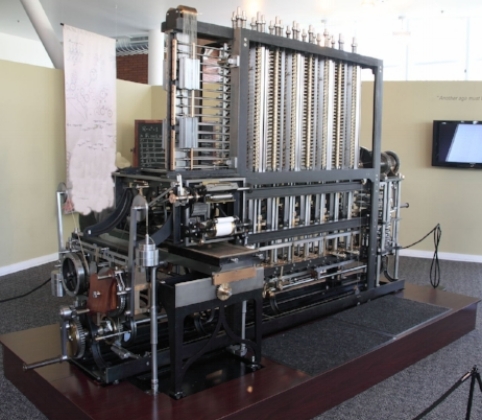Profile: Applying Imagination to Science: Ada Lovelace & the Personal Computer
Elf
When you meet graduates of computer science programs from twenty years ago, you often encounter a resistance to creativity, a disdain for ideas or thinking "outside the box." There's often such a strong emphasis on nomenclature (naming of computer terms), but a lack of understanding in how to create anything new. These individuals can hold management and leadership positions often in academia where they are good at doing repeatable tasks, just like the computers they are working with, are programmed to do. They however consistently fail to see the bigger picture or even allow themselves the opportunity to imagine more.
Imagining The Personal Computer
This is funny though when you look back at the computer itself and how it was first imagined in the minds of Charles Babbage, a mathematician and Ada Lovelace, a talented young lady with a keen aptitude for both mathematics and poetry.
Charles Babbage, considered the father of the computer, built a Difference Machine and an Analytical Engine with the goal of having a device that could do simple mathematical computations for general purposes. Ada loved his work and took this idea further, envisioning a machine that could do complex math like algorithms.
Ada imagined and described in detail a general-purpose machine that could not only do specific preset tasks, but also perform a new programmable array of tasks that could constantly be changed. This immediately opened up a lot of possibilities for how the machine could be used. She also helped define a computer 'operation' to be any process that could alter the mutual relation of two or more things.
Ada recognized that you could take any symbol including words, logic or music and program it into the machine. This brilliant insight became the core concept for our digital age where any piece of content, data or information - whether it is text, music, numbers, symbols, sound or video - can be programmed or expressed in a digital format that can be stored and manipulated by machines.
Thinking Differently and Connecting the Dots
Ada connected the dots, seeing a bigger picture for Babbage's machine than he could see himself. She also wrote the first code for this machine. Ada envisioned the idea for the modern day computer, a machine that would be built 100 years later. As Ada explained in an essay in 1841:
"What is imagination? It is the Combining faculty. It brings together things, facts, ideas, conceptions in new, original, endless, ever-varying combinations...It is that which penetrates into the unseen worlds around us, the worlds of Science."
Computers: Our Partners in Unleashing Potential
Ada's contribution, while criticized and dismissed by the scientific establishment of the day, helped pave the way for a broader understanding of what personal computers could do and how processing power could be used with any type of information. She was able to imagine a future where computers could become partners with human imagination, building something greater together. This is happening today, 100 years later! Today we live in such an exciting time where companies like Apple and many others are making it easier than ever to connect art and science. This is apparent in amazing apps and websites that are being built by individuals and companies in use all over the world.
Design, the Differentiator
The rapid spread and improvements in technology in just the past decade alone has lowered the cost to create software infrastructure. Software has become marginal in cost. Most of the innovation that we are seeing today is at the top of the stack or the interface with end users. Innovation is happening where technology meets design. We believe that the remainder of the 21st century will be defined by entrepreneurial designers and design-led companies who grasp this and work hands-on and collaboratively to create the best user experiences possible.
Curiosity and an Incurable Desire to Improve Things
Designers and creative people who are curious and have a desire to improve things, now have the ability to improve the quality of people's lives on a daily basis as software usage becomes easy and commonplace, for the better. We have the ability to transform how people live from eating, communicating and traveling to solving longstanding global problems such as the ways cities are designed and the resources people have access to (water, healthy foods and more, for example). Our ability to experiment and to communicate while reaching people across the globe has never been faster or easier. Thinking creatively is spreading like wildfire - a fire that we hope is never contained and continues to grow and inspire new thinking and new doing.



